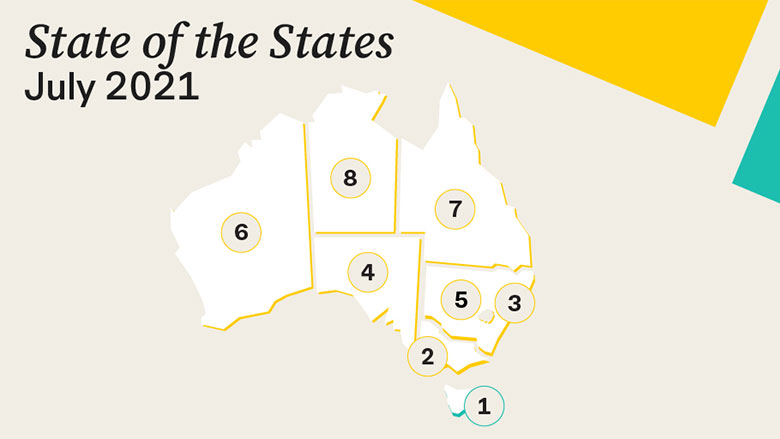Tasmania continues to lead the rankings in the latest CommSec State of the States report, while Queensland and Western Australia show the strongest momentum moving into the second half of 2021, largely due to internal migration.
The CommSec State of the States report is now in its 12th year and uses the latest available information to provide a valuable economic snapshot of how Australia’s state and territory economies are navigating the COVID-19 pandemic.
For the sixth quarter in a row, Tasmania held the mantle of the best performing economy. It led on four of the eight indicators (relative population growth, equipment investment, relative unemployment and dwelling starts) and ranked second on another two indicators (construction work and retail spending).




